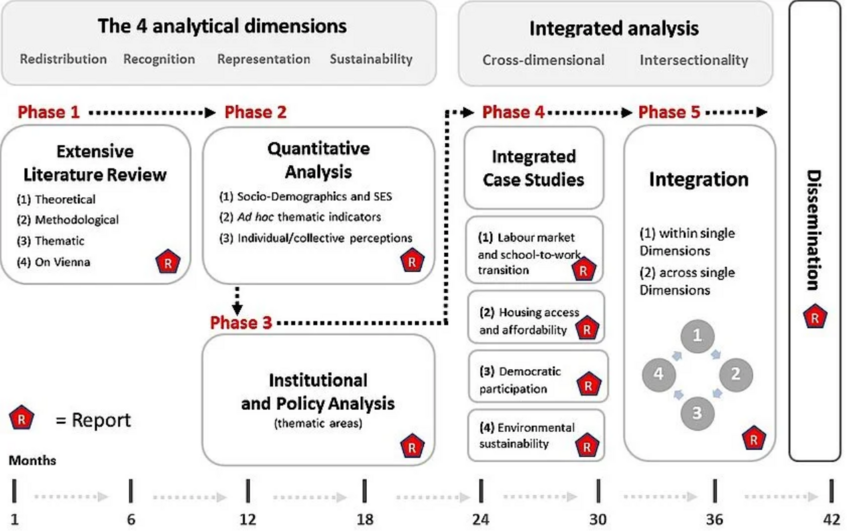Methodology
In order to address the above-mentioned gaps and questions, the project will adopt a mixed-methods approach. Traditionally, investigations on this topic have been mainly based on qualitative methods (especially institutional analysis and ethnographic research, we analyse social trends in the city and the policy transformations by bringing institutional, quantitative and qualitative analysis strongly in dialogue with one another. By studying the changes since 1989, this project focuses on four key areas: the labour market, housing, political participation and environmental justice. These areas will be analyzed through the dimensions of distribution, recognition, representation and sustainability and aim at answering the following research questions:
Housing Market
How did the access to housing and its affordability change in Vienna?
Participation
How do people participate beyond electoral policies?
Labour Market
How did urban economy and labour market policies change over the decades?
Environment
How are environmental qualities distributed in Vienna and who has access?
Research Design
The research project comprises of different phases.
- Literature Review: An extensive literature review lays the foundation for the analysis by clarifying a common conceptual ground.
- Quantitative Analysis: We conduct a structural analysis of urban processes of change covering – according to data availability – the period from 1989 to 2019. Key indicators of inclusion and exclusion within the four policy areas will be analyzed in more detail. Beyond Vienna, a light comparison with other cities in Europe will situate the Viennese case in relation to developments in other cities. The quantitative analysis will provide empirical evidence of changing and varying outcomes.
- Institutional and policy analysis: The third phase consists of an institutional and policy analysis. By studying governmental strategies and municipal policies within multilevel governance arrangements, we focus on regulatory interventions and policy outcomes.
- Integrated case studies: For a more in depth investigation of the four policy areas, the fourth phase will consist of four case studies, which allow us to explore how the analytical dimensions of the "Just City" are prevalent in Vienna.
- Integration within and across policy areas: In the final phase, we synthesize the results from the previous phases in order to identify patterns of inclusion/exclusion as well as potential insider/outsider divides and how they changed over time.

Detailed Timeline of the Research Design in 5 Phases
